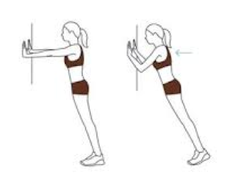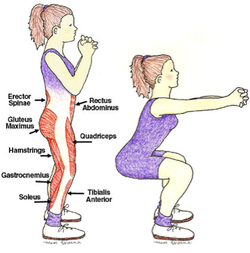|
Most people agree, especially if you live in an overcast climate like we do in the Pacific Northwest, they feel happier on a sunny day than a gloomy day. Why is this? There is a definite relationship between the sunlight and our mood. Many people know humans get vitamin D from the sun. Is it perhaps this vitamin D that makes us happy? If so, what other things does vitamin D do?
Let's first talk about some myths of vitamin D:
The truth is, no matter where you live, you are likely to have a deficiency in vitamin D if you're not already supplementing. What's more, even if you aren't frankly "deficient", you are likely to have sub-optimal levels. Although vitamin D is made in the skin when the skin comes in contact with sunlight, most of the time we aren't getting the right type of sun rays or even getting the right part of our body in the sunlight in order to make the vitamin D.
Unless you eat mushroom-covered cod steak with cups of fortified milk all day long, you most likely are NOT getting enough vitamin D from your diet. Vitamin D is not readily found in fruits and vegetables, like most other vitamins. For that reason, most people need to supplement with vitamin D.
Although vitamin D is a fat-soluble vitamin meaning that it stores in your fat cells, high vitamin D status tends to optimize immune function, decrease pain, decrease allergies, and support healthy cognitive function. The only negative side effect I've seen with high vitamin D levels is increased calcium absorption which increases risks of things like calcium kidney stones. I generally target about 70-100 ng/ml as the ideal range for my patients' vitamin D levels.
The truth is, the normal reference range for vitamin D is quite wide - for most labs it's 35 - 100 ng/ml. What I've seen in most of my patients is they feel the best when their vitamin D levels are as close to 100 as possible (between 70-100 ng/ml ideally). So, unless your vitamin D is already very close to 100 ng/ml, you might feel even better with more vitamin D. Ok, so maybe I need to take vitamin D…now what can it do for my anxiety? One thing we do know is that vitamin D acts in the body a bit more like a hormone than like a true vitamin. That is to say, vitamin D is responsible for signaling more than it is used as a cofactor for different processes to occur, like most other vitamins. Many are aware of the relationship between vitamin D and mood issues like depression or seasonal affective disorder (SAD). Most people aren't aware of the connection between vitamin D and the frustrating feeling of anxiety. It may make sense that if vitamin D can send a signal to your brain that it is happy (i.e. not depressed), then it may also be able to signal to the brain that it is content (i.e. not anxious). In fact, that's exactly what happens. Vitamin D and Neurotransmitters Just as a lack in the production of serotonin is one reason why a person may experience depression, an overall imbalance in the neurotransmitters is one reason a person may experience anxiety. One of the roles of vitamin D in the body is to assist in the release of neurotransmitters, such as serotonin, dopamine, and norepinephrine. Although the exact mechanism of vitamin D deficiency triggering anxiety is not well understood, it seems to be most related to this effect of the vitamin D in signaling appropriate release and metabolism of the neurotransmitters. Joe, the anxious teenager Joe, youngest of 4 (and the only male child) was in the midst of his freshman year in high school. His mom and he came to see me with a chief complaint of anxiety and chest tightness. For a 15-year-old, this is a pretty rare complaint in my practice. The boy was not athletic, preferred technical work over anything outdoors, and lived in the PNW. We checked his vitamin D levels at the first office visit: they came back at the lowest I had ever seen - 9 ng/ml!!! I couldn't believe it! We started oral doses of 20,000 IU daily + a weekly dose of 100,000 IU to help raise his vitamin D levels. After a month of oral supplementation, his vitamin D level rose to 34 ng/ml. More important though, he reported less anxiety and sleep had even improved. How much vitamin D is recommended daily? If you ask the FDA, the Recommended Daily Intake (RDI) for vitamin D is 400 IU - yes four HUNDRED. Every doctor has his/her own opinion about the best daily dose of vitamin D, but in general, most doctors recommend at least 2000 IU daily for adults. This dosing can be much more liberal if a full health assessment has been made. One last thing… There is usually more than one thing contributing to a person's anxiety. Most of the treatment plans I put together for people have a few items geared towards modulating anxiety. Almost always, though, vitamin D is one of the first things on the list.
0 Comments
by Dr. Jessica Corbeille Harris, ND There are two simple home exercises that research has shown to be the best at preventing osteopenia and osteoporosis - one upper body exercise (to target the shoulder joint and it's involved bones) and one lower body exercise (to target the hip joint and it's involved bones). Please consult a physician before beginning any exercise protocol. 1. To prevent breakdown of the shoulder joint: Incline Push Ups  How: Bring your feet about hip-distance apart at about 3-4 feet from the wall or counter. Lean forward to bring your hands to the wall or counter at a distance slightly wider than shoulder distance apart while keeping your heels on the floor, if possible. Take a breath in, as you exhale slowly lower yourself down to the wall and slowly back up. How many: Do 10 repetitions at a time; repeat for 1-3 sets 3-7 times per week. To increase intensity: As these become easier, move your feet farther from the wall to increase your incline. Also try these on a lower counter or on the floor to maximize the angle against gravity. Tip from Dr. C: Keep your bottom down so your body stays in a straight line. 2. To prevent breakdown of hip joint: Squats  How: With feet a bit wider than hip distance apart, inhale and slowly lower yourself down to a squat position. As you exhale, slowly raise yourself back up to a standing position. Keep your knees tracking directly above and behind your toes at all times. Also keep chest and head up and squeeze glut muscles. How many: Do 12 repetitions at a time; repeat for 1-3 sets for 3-4 times per week. To increase intensity: As these become easier, try moving your arms to different positions - lift them over your head, out in front of you, out to the side, hold a small weight, etc. As long as you keep your back straight and strong, these arm positions will all increase the intensity of the exercise and enhance the benefits of the exercise. Tip from Dr. C: If balance is an issue, try doing these in front of a chair. |
AuthorThe Doctors at ENH post to this page regularly with new health information, home remedies, and other interesting tidbits. Archives
May 2024
Categories
All
|
DISCLAIMER: THIS WEBSITE DOES NOT OFFER MEDICAL ADVICE. THE CONTENT OF THIS ELEVATED NATURAL HEALTH WEBSITE AND ANY LINKS INCLUDED ARE INTENDED ONLY FOR EDUCATIONAL AND INFORMATIONAL PURPOSES OR TO DESCRIBE THE CLINICS PRODUCTS AND SERVICES. THIS WEBSITE AND ITS CONTENT ARE NOT INTENDED TO PROVIDE PROFESSIONAL MEDICAL ADVICE, DIAGNOSE THE HEALTH CONDITION OF ANY INDIVIDUAL OR SUBSTITUTE FOR PROFESSIONAL GUIDANCE IN THE ADMINISTRATION OF ANY TREATMENT. YOU SHOULD ALWAYS SEEK THE ADVICE OF A LICENSED PHYSICIAN OR OTHER QUALIFIED HEALTHCARE PRACTITIONER REGARDING ANY PERSONAL CONCERNS AS TO SYMPTOMS, MEDICAL CONDITIONS, OR THE USE OF ANY PRODUCTS. SUCH COUNSEL SHOULD NOT BE DISREGARDED OR DELAYED BASED UPON ANY INFORMATION CONTAINED WITHIN THIS WEBSITE. DR. JESSICA CORBEILLE-HARRIS, ND AND DR. MCKENZIE J TIMMER, ND EACH HAVE A DOCTORATE IN NATUROPATHIC MEDICINE AND ARE LICENSED NATUROPATHIC PHYSICIANS IN THE STATE OF WASHINGTON. ANY REFERENCE TO THE PRACTICE OF NATUROPATHIC MEDICINE DOES NOT APPLY IN STATES WHERE NATUROPATHIC MEDICINE IS NOT LICENSED.
Proudly powered by Weebly

 RSS Feed
RSS Feed